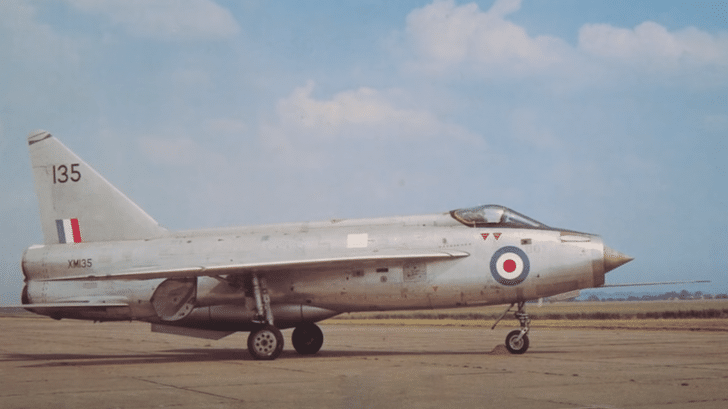Committing mistakes at your job can be stressful. However, it’s definitely not as stressful as Taffy Holden’s mistake on July 22, 1966.
Scheduled Ground Testing
That day, Walter “Taffy” Holden, a 39-year-old engineer of the RAF’s No.33 Maintenance Unit, was working on the two Rolls-Royce Avon turbojets fitted on the Mach 2.0-capable English Electric Lightning.

Introduced in 1960, the Lightning was a British supersonic fighter interceptor known for its exceptional rate of climb and top speeds.
Holden needed to do some ground testing on the Lightning that day, but there were no pilots available for another week. It looked like the ground tests were going to be delayed until one test pilot suggested that he should just do it himself.
Can’t You Do It?
In 1943, while studying to become an engineer, the RAF offered Holden the opportunity to go through basic pilot training. Taffy agreed and after taking a short course of flight training, received his pilot’s wings.

Holden had some experience flying on the de Havilland Tiger Moth biplane and subsequently practiced flying on the de Havilland Canada DHC-1 Chipmunk during his early career – but these planes could never come close to what the Lightning was capable of.
Looks Simple, Right?
Regardless, for ground tests to continue, it only needed to be taxied 30 to 40 years for each portion anyway. All he had to do was set different electrical configurations, spool up the engine, cut power, and apply brakes to slow and stop the aircraft.
While doing so, he would have to communicate using hand signals with a support crew nearby, relaying information to the control tower.

The canopy was removed, while the electrical wiring hung off the side and the landing gear locked in the down position. Holden jumped into the Lightning XM.135 and began the test with no helmet or radio.
A Series Of Close Calls
Everything was going great until the second test when he moved the throttle forward and mistakenly moved it past the afterburner gate. When he did, the afterburners quickly ignited and it only took a few seconds for the jet to gain momentum.

Holden whizzed through the runway, barely missing a fuel tanker truck and a de Havilland Comet passing through. Now nearing the end of the runway, he knew he only had one choice – pull the throttle back.

The Lightning leaped into the sky with Holden still inside. He had no helmet, no canopy, no radio, and barely any experience flying a jet. For a brief moment, he thought of ejecting. However, the ejection seat was inoperable since it was in “test mode.”
Third Time’s The Charm
After a few moments, Holden finally found the throttle gate key and was able to deselect the afterburners. With the aircraft now slowing down, he brought the aircraft around and tried to land it. He tried it once, then twice, and aborted the landing again.

It should be noted that the Lightning’s landing speed was quite high due to its larger sweep wing angle, which made landing difficult even for duty pilots.
Fortunately, on the third try, he managed to land the Lightning, slamming the tail first onto the runway. With his drogue chute detached from the impact, Holden was able to slow the aircraft less than a hundred yards from the end of the runway.
Holden flew the Lightning for 12 minutes.



